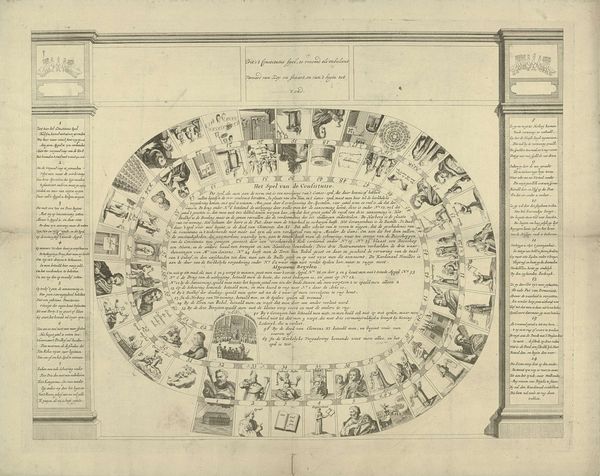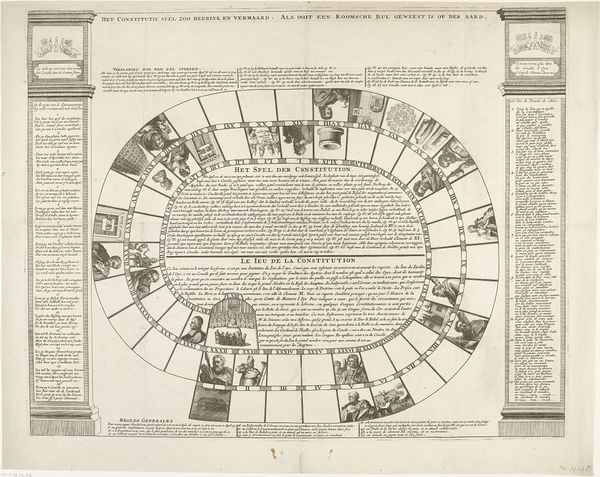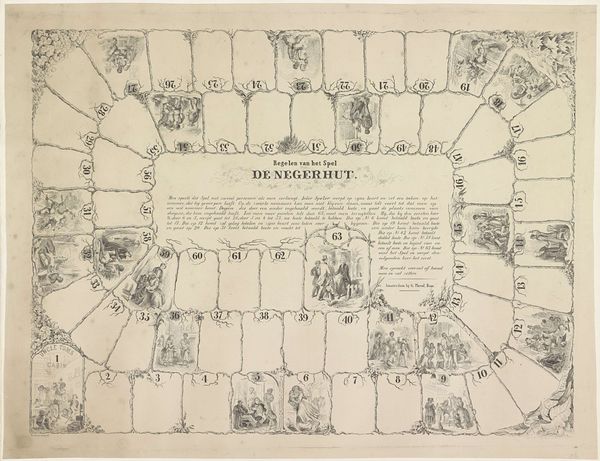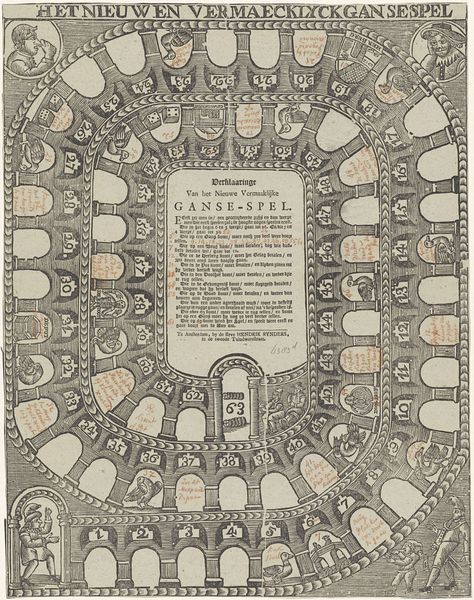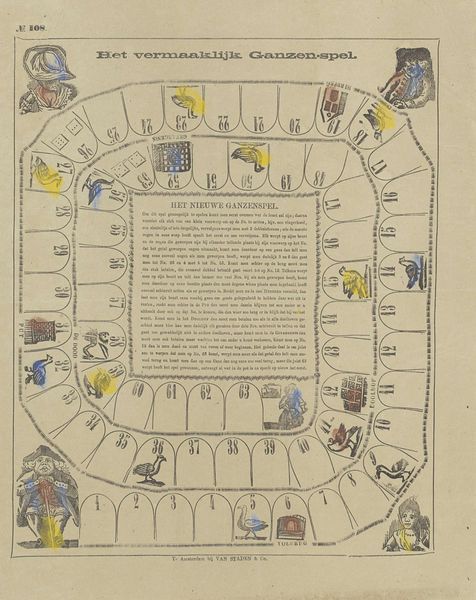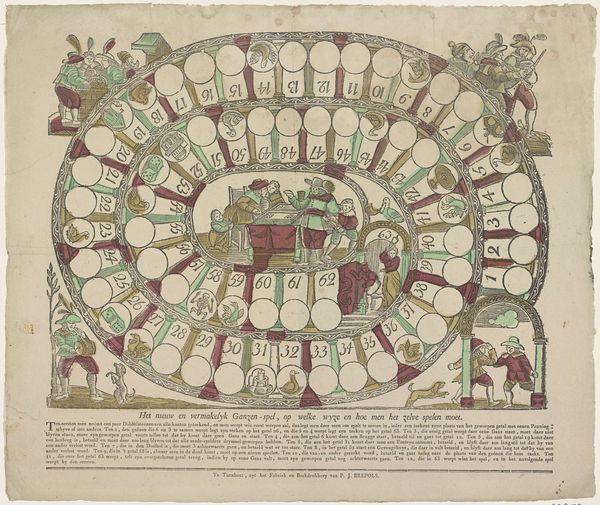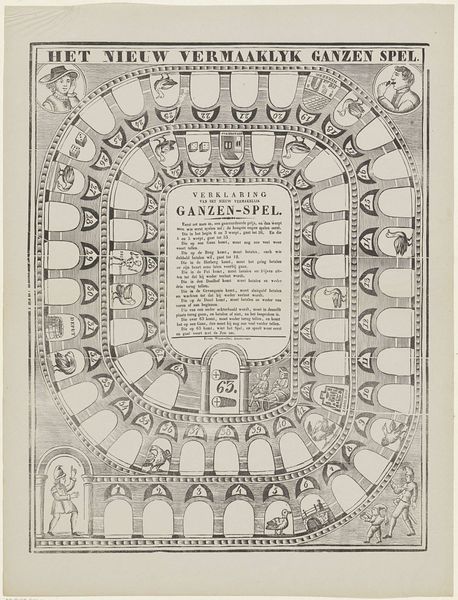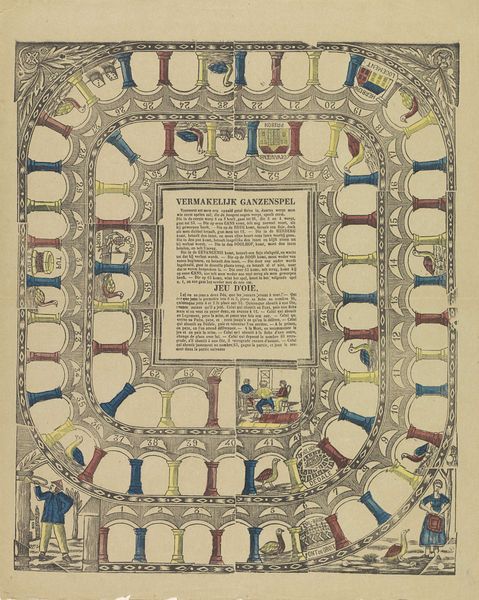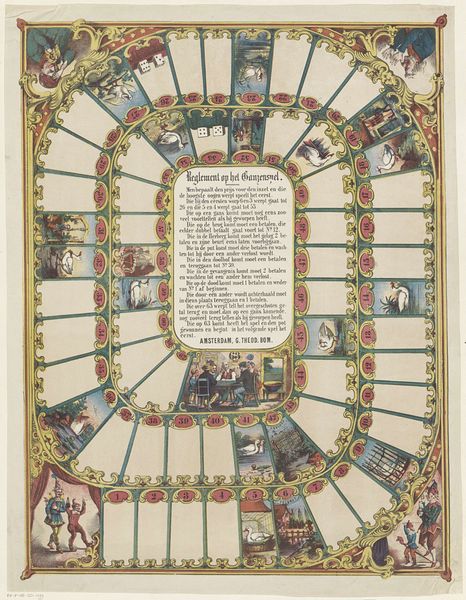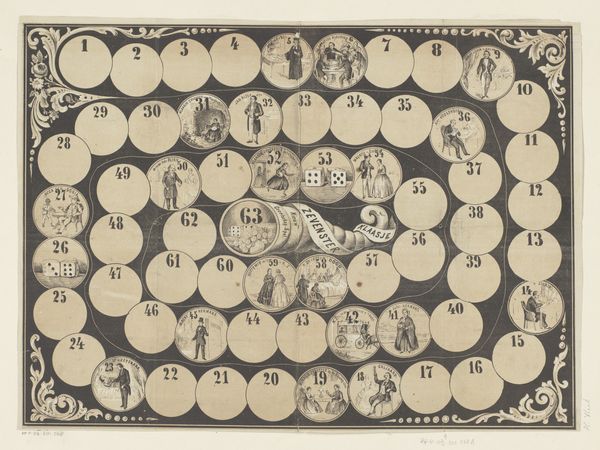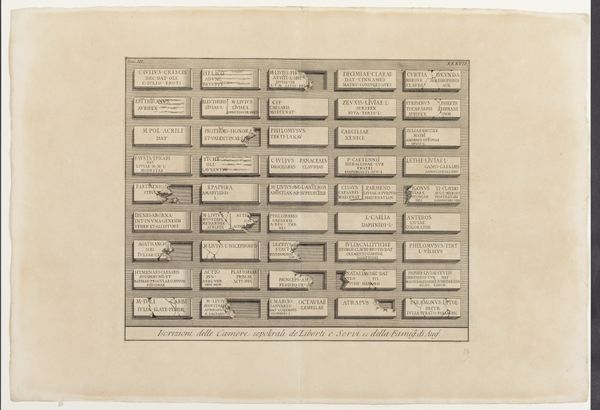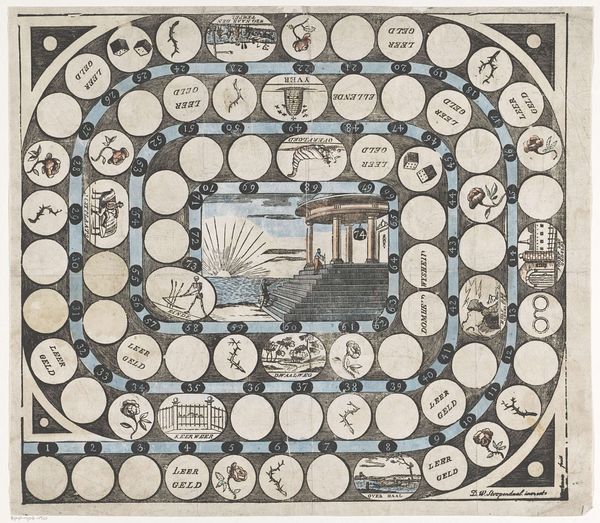
graphic-art, print, engraving
#
graphic-art
# print
#
genre-painting
#
engraving
Dimensions: height 449 mm, width 534 mm
Copyright: Rijks Museum: Open Domain
Curator: Here we have an engraving from 1858, titled "Ganzenspel," housed in the Rijksmuseum. It's an anonymous work, depicting what appears to be a board game. Editor: It reminds me of old family game nights. This circular layout, with the charming albeit rudimentary figures scattered along its path—it evokes a quaint nostalgia, doesn’t it? But I immediately zoom in on the materials and processes used to make it: how the printing matrix would have been made and manipulated in the copper, the labour that all of it requires. Curator: Absolutely. "Ganzenspel," which translates to "Game of the Goose," was an incredibly popular game dating back centuries, and was meant to be enjoyed and accessible across gender, race and age groups, but these kinds of illustrations offer insight into the broader social contexts of that entertainment, no? Consider the potential gender roles displayed here, if any. Editor: Indeed. We can speculate, or start to investigate whether printed games like this were broadly made available, to different echelons of Dutch society for instance? The graphic quality implies a specific consumer. Curator: And consider the specific details within each numbered space. There's a well, a tavern, various figures engaged in everyday activities. These wouldn't merely be arbitrary; each symbol resonates with certain shared meanings and assumptions, and the entire illustration is deeply steeped in folklore and popular culture from the period. Editor: So you think we could learn much from these scenes if we approached each square as some symbolic gesture? I mean, look at the composition and its physical qualities. The inking quality isn’t sharp: do we see then this being more broadly distributed, mass-produced perhaps, reaching broader sections of society in doing so? Curator: Perhaps! What I think this print exemplifies best is how cultural pastimes, seemingly trivial, acted as social markers and are deeply intertwined with the period’s belief systems. It opens to ask broader questions on social strata, how it played a role in domestic and personal life. Editor: I find myself increasingly drawn to its materiality now. What papers would be used for such purposes at the time, what methods were most efficient for mass production? "Ganzenspel" truly brings forward a window of analysis into materials of everyday leisure in the 19th century!
Comments
No comments
Be the first to comment and join the conversation on the ultimate creative platform.
